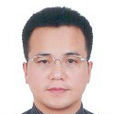胡修棉,男,1974年4月生,江西新建人,博士,南京大學地球科學與工程學院教授、博士生導師。獲國家傑出青年科學基金、侯德封礦物岩石地球化學青年科學家獎,入選教育部“新世紀優秀人才支持計畫”、南京大學優秀中青年學科帶頭人培養計畫(A類),《中國科學:地球科學》、《古地理學報》編委。
基本介紹
- 中文名:胡修棉
- 國籍:中國
- 民族:漢族
- 出生地:江西新建
- 出生日期:1974年4月
- 職業:教師
- 畢業院校:成都理工大學
- 主要成就:國家傑出青年科學基金
- 代表作品:《藏南古錯地區上侏羅統上部和下白堊統沉積相分析》
- 研究方向:沉積地質學、沉積大地構造
- 職務:教授、博士生導師
個人簡歷,學習經歷,工作經歷,學術兼職,學術期刊任職,科學研究,榮譽獎勵,研究興趣,科研項目,學術論文,
個人簡歷
學習經歷
1999.09 - 2002.07,成都理工大學沉積地質研究所,獲“古生物學與地層學”(沉積地質方向)博士學位
1996.09 - 1999.07,成都理工學院沉積地質研究所,獲“古生物學與地層學”(沉積地質方向)碩士學位
1992.09 - 1996.07,成都理工學院地質系,獲地質學學士學位
工作經歷
2003.07–現在,南京大學地球科學與工程學院從事教學與科研工作(先後於2003年11月、2008年11月、2009年4月被聘為副教授、教授、博士生導師)
2010.9–2011.8,英國愛丁堡大學(The University of Edinburgh)地球科學學院合作訪問研究(合作者Hugh D. Sinclair 教授)
2002.07–2003.7,義大利馬爾理工大學(Marche Polytechnic University)海洋科學研究所,博士後(合作導師Massimo Sarti教授)
學術兼職
2013年3月-2017年12月,國際地球科學計畫第609項共同主席
2003年3月-2006年12月,國際地球科學計畫第494項(青年科學家項目)主席
2007年3月-2010年12月,國際地球科學計畫第555項目秘書
2002年3月-2006年12月,國際地球科學計畫第463項目秘書
2013年4月-2017年,中國礦物岩石地球化學學會第八屆岩相古地理專業委員會委員
2004年起,國際沉積地質學會(Society for Sedimentary Geology,SEPM)會員;2008年起任SEPM中國大使(Chinese Ambassador)
2010年起,美國地質學會(Geological Society of America)會員
2004年起,國際沉積學家協會(International Association of Sedimentologists, IAS)會員
學術期刊任職
2015年起,《地學前緣》助理編委
2014年起,《中國科學:地球科學》、《Sciences in China – D-Earth Sciences》編委
2014年起,《古地理學報》、《Journal of Palaeogeography》編委
主編國際沉積地質學會SEPM Special Publication 91 “白堊紀大洋紅層”(2009)
主編國際期刊專輯《Sedimentary Geology》(Vol. 235, issues 1-2, 2010)、《Cretaceous Research》(Vol. 38, issues 1-2, 2012)
科學研究
榮譽獎勵
2015年獲國家傑出青年科學基金
2012年獲第十四屆侯德封礦物岩石地球化學青年科學家獎
2005年入選教育部“新世紀優秀人才支持計畫”
2010年入選南京大學優秀中青年學科帶頭人培養計畫(A類)
研究興趣
大陸碰撞、高原隆升與沉積盆地
中新生代溫室氣候與古海洋
青藏特提斯地質演化
大洋紅層與黑色頁岩
科研項目
國家傑出青年基金項目,沉積學,41525007,2016.1-2020.12,主持,進行中
國家重點基礎研究發展計畫973課題, 晚中生代東特提斯古海洋和古環境演變, 2011CB822001,主持,進行中
國家自然科學基金面上項目, 拉薩地體措勤—申扎盆地白堊紀沉積演化, 41472081, 2015.1-2018.12,主持,進行中
中國科學院戰略性先導科技專項(B類)子課題,印度-亞洲大陸碰撞前後關鍵地層的沉積學研究,XDB03010106, 2012.10-2017.10,主持,進行中
國家自然科學基金面上項目,藏南晚白堊世-古近紀宗卓混雜岩及其與印度-亞洲大陸碰撞的關係,41172092,2012.1-2015.12,主持,已結題
國家重點基礎研究發展計畫973課題,海相白堊紀重大地質事件與氣候變化,2006CB701402,2006.1-2010.8,主持,已結題
國家自然科學基金面上項目,西藏特提斯海的關閉過程:藏南沉積記錄的回響,40772070,2008.1-2010.12,主持,已結題
國家自然科學基金青年項目,特提斯喜馬拉雅早白堊世火山岩屑砂岩及其與岡瓦納大陸的最後裂解, 40302017,2004.1-2006.12,主持,已結題
教育部新世紀優秀人才支持計畫項目,藏西南喜馬拉雅白堊紀-古近紀沉積演化:從新特提斯到喜馬拉雅的轉變,2006.1-2008.12,主持,已結題
國際地球科學計畫IGCP494項目(青年科學家項目),特提斯域中白堊世大洋沉積:從黑色頁岩到大洋紅層的轉變,2003.1-2006.12,主持,已結題
學術論文
As first author and corresponding author (SCI)
(1)Hu X., Garzanti E., Wang J., Huang W., An W., Webb A., 2016. The timing of India-Asia collision onset – facts, theories, controversies. Earth-Science Reviews, v. 160, p. 264–299.
(2)Hu, X., Wang, J., BouDagher-Fadel, M., Garzanti, E., and An, W., 2016, New insights into the timing of the India–Asia collision from the Paleogene Quxia and Jialazi formations of the Xigaze forearc basin, South Tibet: Gondwana Research, v. 32, p. 76-92.
(3)Hu, X., Garzanti, E., Moore, T., and Raffi, I., 2015, Direct stratigraphic dating of India-Asia collision onset at the Selandian (middle Paleocene, 59 ± 1 Ma): Geology, v. 43, p. 859-862.
(4)Hu, X.M., An, W., Wang, J.G., Garzanti, E., and Guo, R.H., 2014, Himalayan detrital chromian spinels and timing of Indus-Yarlung ophiolite erosion: Tectonophysics, v. 621, p. 60-628.
(5)Hu, X., Scott, R.W., Cai, Y., Wang, C., and Melinte-Dobrinescu, M.C., 2012, Cretaceous Oceanic Red Beds (CORBs): Different time scales and models of origin. Earth Science Reviews, v. 115, p. 217-248.
(6)Hu, X., Sinclair, H.D., Wang, J.G., Jiang, H., and Wu, F.Y., 2012, Late Cretaceous-Palaeogene stratigraphic and basin evolution in the Zhepure Mountain of southern Tibet: implications for the timing of India-Asia initial collision: Basin Research, v. 24, p. 520-543.
(7)Hu, X.M., Zhao, K.D., Yilmaz, I.O., and Li, Y.X., 2012, Stratigraphic transition and palaeoenvironmental changes from the Aptian oceanic anoxic event 1a (OAE1a) to the oceanic red bed 1 (ORB1) in the Yenicesihlar section, central Turkey: Cretaceous Research, v. 38, p. 40-51
(8)Hu, X., Wagreich, M., Yilmaz, I.O., 2012, Marine rapid environmental/climatic change in the Cretaceous greenhouse world. Cretaceous Research, v. 38, p. 1-6.
(9)Hu, X., 2012, Testing the validity of Nd isotopes as a provenance tool in southern Tibet for constraining the initial India–Asia collision: Journal of Asian Earth Sciences, v. 53, p. 51-58.
(10)Hu, X., Huang, Z., Wang, J., Xu, K., Hu, W., and Jansa, L., 2012, Geology of the Fuding inlier in southeastern China: implication for late Paleozoic Cathaysian paleogeography: Gondwana Research, v. 22, p. 507-518.
(11)Hu, X., Jansa, L., Chen, L., Griffin, W.L., O'Reilly, S.Y., and Wang, J., 2010, Provenance of Lower Cretaceous Wölong Volcaniclastics in the Tibetan Tethyan Himalaya: Implications for the final breakup of Eastern Gondwana: Sedimentary Geology, v. 223, p. 193-205.
(12)Hu, X., Cheng, W., and Ji, J., 2009, Origin of the Cretaceous Oceanic Red Beds (CORBs) as interpreted by Visible Reflectance and Inorganic Geochemistry from the Vispi Quarry Section, Central Italy, in Hu, X., Wang, C., Scott, R.W., Wagreich, M., and Jansa, L., eds., Cretaceous Oceanic Red Beds: Stratigraphy, Composition, Origins and Paleoceanographic/Paleoclimatic Significance: Tulsa, OK, SEPM Special Publication 91, p. 183-197.
(13)Hu, X., Jansa, L., and Wang, C.S., 2008, Upper Jurassic-Lower Cretaceous stratigraphy in south-eastern Tibet: a comparison with the western Himalayas: Cretaceous Research, v. 29, p. 301-315.
(14)Hu, X., Jansa, L., and Sarti, M., 2006, Mid-Cretaceous oceanic red beds in the Umbria-Marche Basin, central Italy: Constraints on paleoceanography and paleoclimate: Palaeogeography Palaeoclimatology Palaeoecology, v. 233, p. 163-186.
(15)Hu, X., Wang, C., Li, X., and Luba, J., 2006, Upper Cretaceous oceanic red beds in southern Tibet: Lithofacies, environments and colour origin: Science in China Series D-Earth Sciences, v. 49, p. 785-795.
(16)Hu, X., Jansa, L., Wang, C.S., Sarti, M., Bak, K., Wagreich, M., Michalik, J., and Sotak, J., 2005, Upper Cretaceous oceanic red beds (CORBs) in the Tethys: occurrences, lithofacies, age, and environments: Cretaceous Research, v. 26, p. 3-20.

